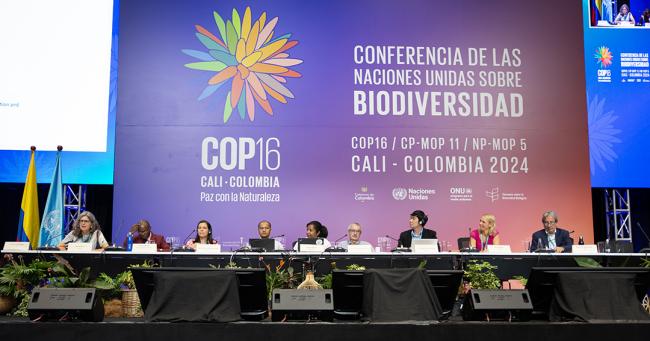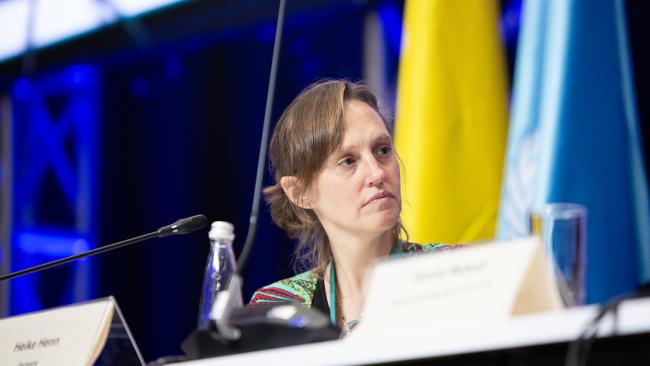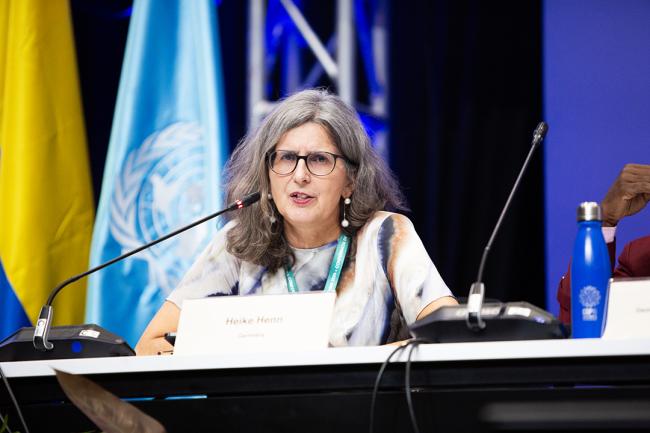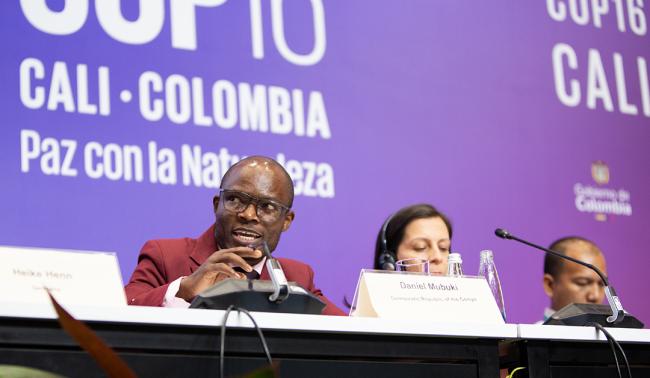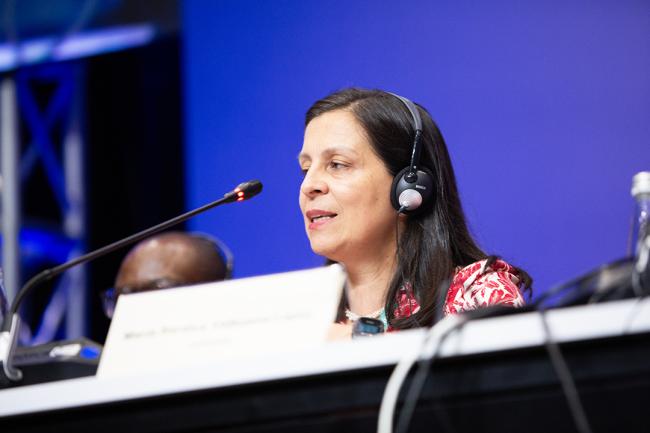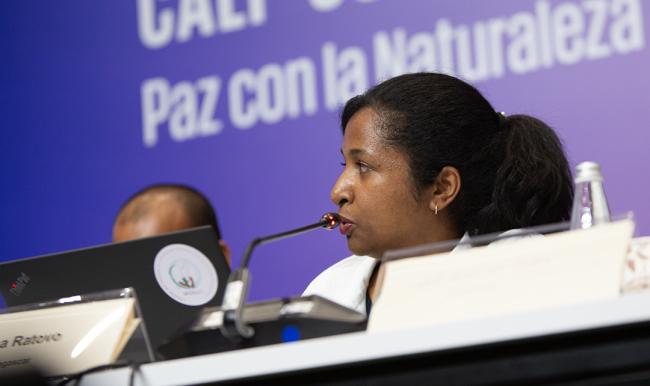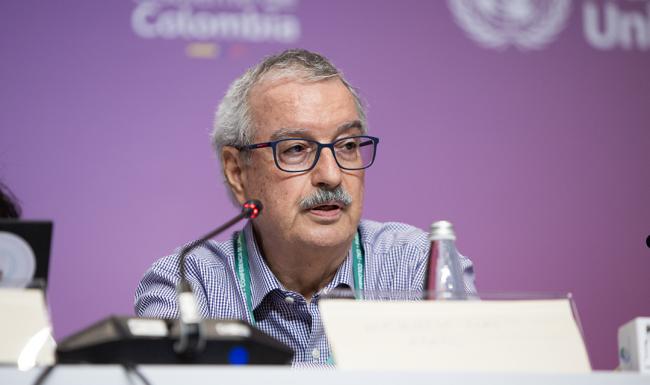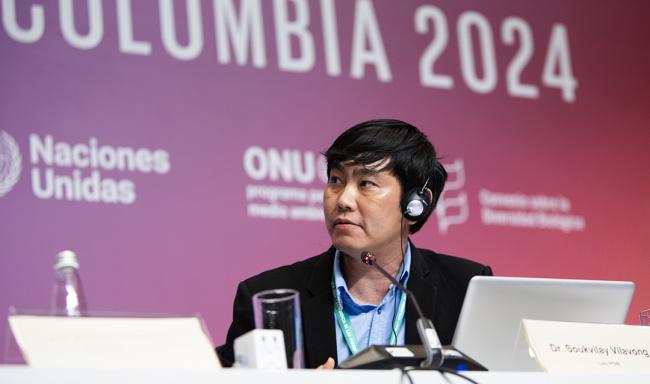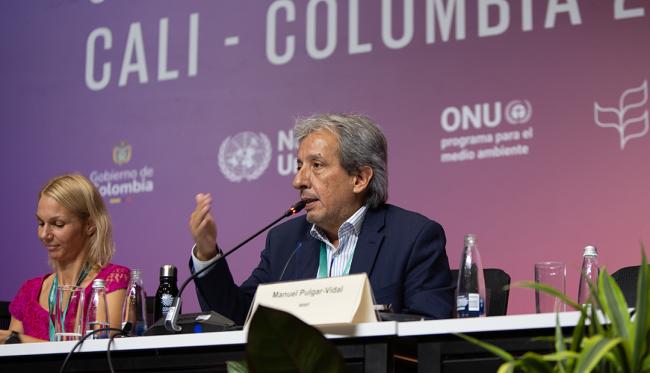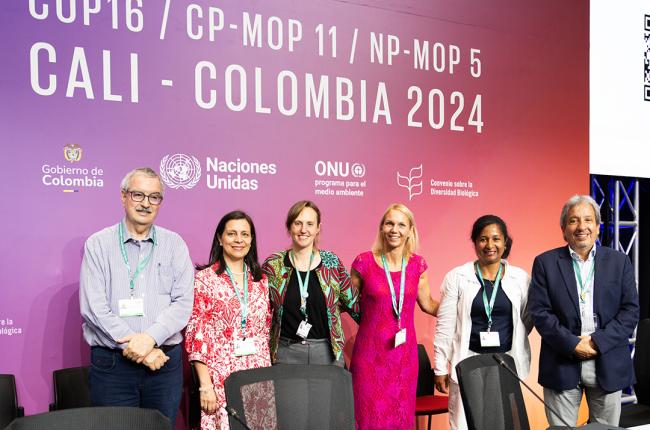About
The intertwined nature of climate and biodiversity calls for a more aligned approach in addressing these issues. Synergies have already been identified through national experiences, as reflected in National Biodiversity Strategies and Action Plans (NBSAPs) and Nationally Determined Contributions (NDCs). While they exist under different conventions, building upon their synergies can result in a more effective solution to the climate and biodiversity crisis.
Aligning NBSAP and NDC implementation presents opportunities for countries to effectively address the challenges of climate and biodiversity. However, translating the synergies identified on paper into concrete measures is difficult. In this event, panelists shared their country’s experiences and discussed opportunities for and challenges to creating tangible solutions to the joint implementation of NBSAPs and NDCs.
Moderator Lena Katzmarski, German Development Agency (GIZ), welcomed attendees to the event, titled “Solutions for the Implementation of Synergies between Climate and Biodiversity Action.” She noted that capitalizing on the interconnectedness of climate and biodiversity would better equip countries to address these challenges.
In a keynote speech, Heike Henn, German Federal Ministry of Economic Cooperation and Development, emphasized that the key issue is the implementation of solutions that can create synergies between climate and biodiversity. She said this interconnectedness has already been acknowledged, and that the next step is to take an ambitious and strategic approach to implementation of coherent policies. She pointed out that mobilization of resources is one of the toughest challenges to overcome, and called for a more prominent role for financing.
Katzmarski then asked the panelists to: discuss the alignment of NBSAPs and NDCs in their countries; elaborate on the opportunities and challenges that they face; and share concrete steps that they are taking and/or going to take.
Daniel Mukubi, Ministry of Environment and Sustainable Development, Democratic Republic of Congo (DRC), said that in his country, they have identified elements that can strengthen the collaboration of actors between biodiversity and climate change. He said the DRC has a platform for all national focal points of the different conventions related to biodiversity, which facilitates cooperation among them. He noted, however, that the level of care in addressing the issues of climate change and biodiversity are not the same. He pointed out that while there are several funding mechanisms for addressing climate change no dedicated funding mechanism exists for biodiversity. He said that both issues should be addressed at the same level.
María Saralux Valbuena López, Ministry of Environment and Sustainable Development, Colombia, shared that her country has an updated biodiversity plan which incorporates the synergies found in climate change and biodiversity. She also said they had just submitted their NBSAP and are currently updating their NDC, and indicated the potential to connect the two.
Olitina Ratovo, Ministry of the Environment and Sustainable Development, Madagascar, shared her country’s 2024-2030 vision, noting they have implemented many best practices from various projects and programmes. She highlighted the protected areas that they have within their territory, saying this is one way to promote the synergy between NBSAPs and NDCs. She noted there are still ways to improve, such as optimizing financial mechanisms to help those countries that need it.
Speaking on the experience of Brazil, Braulio Ferreira de Souza Dias, Ministry Environment and Climate Change and former CBD Executive Secretary, said his country is finalizing a climate plan which will update their NDC. He also shared that all Brazilian states have developed and implemented their own biodiversity plans, which are still aligned with the global targets, as a result of the consultations they have conducted.
Soukvilay Vilavong, Ministry of Natural Resources and Environment, Lao People’s Democratic Republic, highlighted significant progress in his country. He outlined strategies to synergize and align the approach to climate and biodiversity, such as finalization of NBSAP updates, contribution to the global community, and involvement of Indigenous Peoples and local communities. He noted that traditional knowledge enhances sustainable development. He named lack of resources, coordination and governance, data management, effective and efficient monitoring, and capacity building as the main challenges in achieving synergies between biodiversity and climate.
Reflecting on the discussion among panelists, Manuel Pulgar-Vidal, Climate & Energy, World Wide Fund for Nature (WWF), stressed the importance of building on the processes that are currently present instead of merely repeating it in other contexts or conventions. He said synergies do not necessarily mean merging different issues, but rather that it is a way to connect paths moving forward.
In her closing remarks, Ida Hellmark, Norwegian Agency for Development Cooperation, noted that the Kunming-Montreal Global Biodiversity Framework (GBF) provides an opportunity to build bridges between climate and biodiversity. She also said that sharing the experiences of different countries is important to see that we are “moving beyond brackets, and forward into action.”
Organizer: GIZ
Contact: Lena Katzmarski, GIZ, lena.katzmarski@giz.de
For more information:
https://www.cbd.int/side-events/5955
To receive free coverage of global environmental events delivered to your inbox, subscribe to the ENB Update newsletter.
All ENB photos are free to use with attribution. For the 2024 UN Biodiversity Conference, please use: Photo by IISD/ENB | Angeles Estrada Vigil

